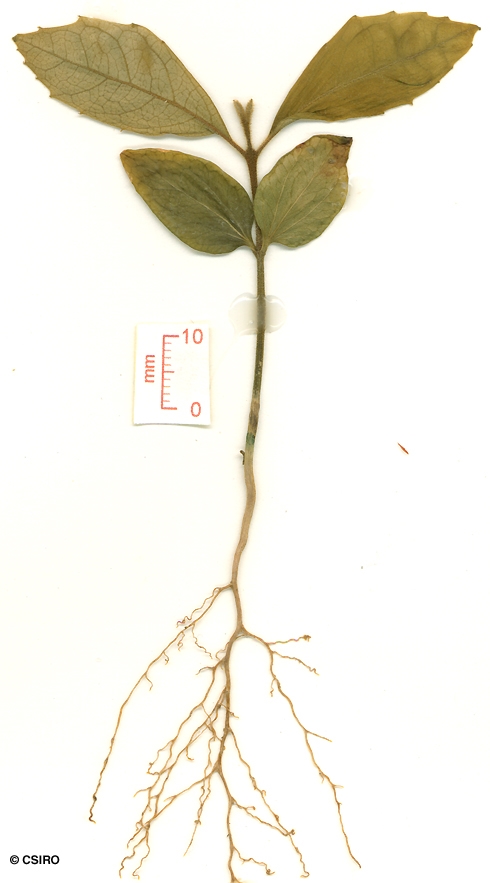Australian Tropical Rainforest Plants - Online edition
Steganthera laxiflora subsp. lewisensis Whiffin



Whiffin, T. (2007) Flora of Australia 2: 454. Type: S.F.R. 143, Kanawarra, Carbine Logging Area, 6 Jun. 1988, B. Hyland13748; Holo: QRS; Iso: LTB.
Beech, Tetra; Tetra Beech
Seldom exceeding 30 cm dbh. Oak grain in the wood.
Inflorescence shorter than the leaves. Flowers about 3 mm diam. Tepals small and inconspicuous. Staminal filaments fused to form a short tube. Female flowers operculate. Carpels about 14-18.
Receptacle orange-brown, not very swollen, sparsely pubescent. Fruiting carpels ellipsoid, about 17 x 9 mm. Seed about 12 x 5-6 mm. Embryo about 5 mm long. Cotyledons slightly wider than the radicle.
Cotyledons lanceolate, about 20-24 mm long, 3-veined. At the tenth leaf stage: leaves elliptic to obovate, apex acute or acuminate, base cuneate, hairy on the upper surface, about 5-7 lateral veins each side of the midrib forming loops inside the blade margin; petiole, stem and terminal bud densely clothed in pale brown hairs. Seed germination time 62 days.
Probably endemic to NEQ, known only from collections in the Mt Spurgeon-Mt Lewis area. Altitudinal range from 1000-1200 m. Grows as an understory tree in mountain rain forest.





